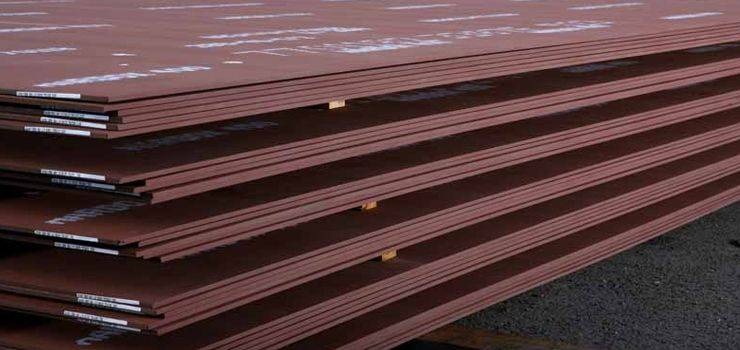In industries where strength, durability, and resistance to wear are essential, AR 450 plates stand out as one of the most trusted materials. These steel plates are specially engineered to offer outstanding performance under high-stress conditions, making them ideal for mining, construction, agriculture, and more.
If you’re new to the term or just looking to understand AR 450 plates better, this comprehensive guide will walk you through everything you need to know—from what AR 450 means to its key properties, uses, and advantages. Whether you’re a procurement manager, engineer, or simply researching for your next project, this article aims to deliver the information in a clear, practical, and user-friendly manner.
Understanding AR 450 Plates: What Does AR Stand For?
Let’s start with the basics. The “AR” in AR 450 stands for “abrasion resistant.” As the name suggests, these plates are designed to withstand high levels of wear and tear. This makes them especially useful in applications where surfaces are exposed to friction, scraping, or impact from hard materials.
The number 450 refers to the Brinell Hardness Number (BHN), a scale that measures the hardness of materials. So, AR 450 Plates have a hardness rating of approximately 450 BHN, which is considerably higher than standard structural steel.
Key Properties of AR 450 Plates
The unique value of AR 450 plates lies in their mechanical and chemical composition. Let’s dive into the standout properties:
1. High Hardness
As already mentioned, AR 450 steel plates are known for their high hardness of 450 BHN. This makes them extremely resistant to wear and abrasion.
2. Excellent Tensile Strength
These plates also offer exceptional tensile strength, which refers to their ability to withstand tension without breaking or deforming.
3. Good Toughness
Despite being hard, AR 450 plates maintain a good level of toughness, making them less brittle than other wear-resistant materials.
4. Uniform Surface Quality
The smooth and consistent surface finish ensures better formability and easy fabrication, which is important for manufacturing.
5. Weldability
While higher hardness steels can be tricky to weld, AR 450 plates offer moderate weldability, especially when proper preheating and post-welding processes are followed.
Chemical Composition of AR 450 Plates
Understanding the chemical makeup helps explain why these plates perform so well under stress. Here’s a general breakdown:
| Element | Typical Range (%) |
|---|---|
| Carbon (C) | 0.20 – 0.30 |
| Manganese (Mn) | 1.00 – 1.60 |
| Chromium (Cr) | 0.40 – 1.00 |
| Nickel (Ni) | 0.25 – 0.50 |
| Molybdenum (Mo) | 0.20 – 0.40 |
| Silicon (Si) | 0.20 – 0.50 |
| Sulfur (S) | ≤ 0.010 |
| Phosphorus (P) | ≤ 0.025 |
Mechanical Properties at a Glance
Here’s a quick reference for some important mechanical properties of AR 450 steel:
| Property | Value |
|---|---|
| Hardness (BHN) | ~450 |
| Tensile Strength | 1350 – 1600 MPa |
| Yield Strength | ~1200 MPa |
| Elongation (in 2”) | 10 – 12% |
| Impact Toughness (Charpy) | 20 – 25 ft-lbs (at -40°C) |
Where Are AR 450 Plates Used?
Due to their durability and strength, AR 450 plates are used in a wide range of industries and applications, including but not limited to:
1. Mining and Quarrying
In environments where rock, gravel, and other abrasive materials are constantly in contact with machinery, AR 450 plates are used for liners, dump truck bodies, and crushers.
2. Construction Equipment
For buckets, bulldozer blades, and excavator arms, AR 450 offers the wear resistance necessary to withstand tough job site conditions.
3. Agriculture
Agricultural machinery like plows, tillers, and harvesting equipment often use these plates to prolong equipment life.
4. Recycling and Waste Management
Equipment used for shredding and processing waste often features AR 450 plates due to their ability to endure constant abrasion.
5. Cement and Steel Plants
Chutes, hoppers, and conveyors in cement and steel industries benefit from the longevity AR 450 provides.
6. Military and Defense
Used in the manufacture of armored vehicles and protective barriers, AR 450 combines strength and toughness effectively.
Benefits of Using AR 450 Plates
When it comes to choosing the right material for heavy-duty applications, the benefits of AR 450 plates are hard to ignore.
1. Superior Wear Resistance
The most obvious benefit is outstanding wear resistance, which translates to fewer replacements and less downtime.
2. Cost-Effectiveness Over Time
While AR 450 plates might be more expensive upfront, their durability often results in significant cost savings over time through reduced maintenance and part replacements.
3. Extended Service Life
These plates can easily last 2 to 3 times longer than traditional carbon steel plates in abrasive environments.
4. Reduced Equipment Downtime
By minimizing wear and tear, AR 450 steel plates reduce equipment downtime, helping projects stay on schedule.
5. Versatility
From construction and mining to agriculture and recycling, AR 450 plates are suitable for a wide variety of demanding uses.
How AR 450 Plates Compare to Other Grades
Let’s compare AR 450 with other commonly used abrasion-resistant plates:
| Grade | Hardness (BHN) | Wear Resistance | Toughness | Cost |
|---|---|---|---|---|
| AR 400 | ~400 | Good | Excellent | Moderate |
| AR 450 | ~450 | Better | Good | Moderate |
| AR 500 | ~500 | Best | Moderate | High |
Conclusion
In demanding industrial environments, choosing the right material can make a huge difference in productivity, equipment longevity, and overall cost-efficiency. With its balanced hardness, toughness, and versatility, AR 450 plates are an excellent option for those seeking a long-term solution to abrasion and wear.
Whether you’re working in mining, agriculture, or heavy machinery manufacturing, AR 450 steel plates can give your operation the edge it needs. Just make sure to follow best practices for fabrication and welding, and you’ll benefit from one of the most reliable and robust wear-resistant materials available today.
